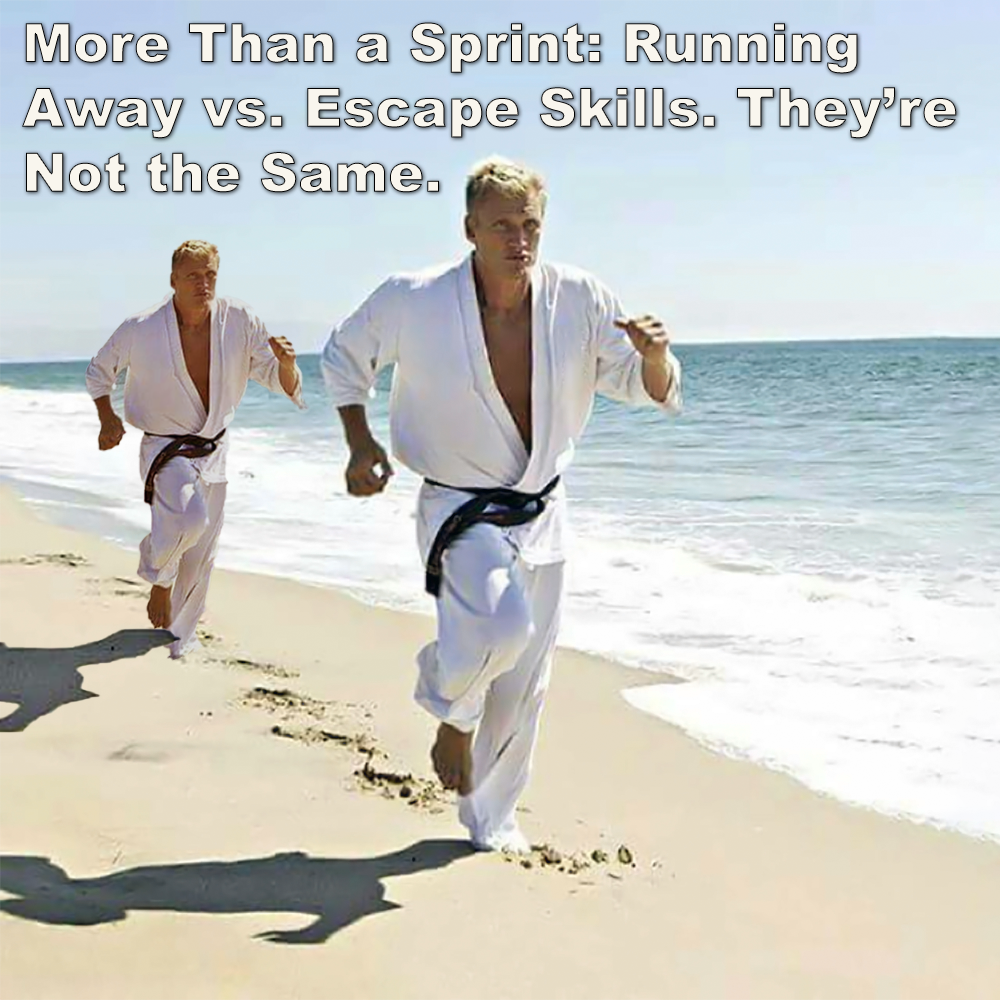
More Than a Sprint: Running Away vs. Escape Skills. They’re Not the Same.
Posted by ADAM CARTER on NOV 23, 2024

More Than a Sprint: Running Away vs. Escape Skills. They’re Not the Same.
(Approx 2 minute 15 second read)
Someone commented on one of my articles: “Forget about learning self-defense techniques, which you are likely to forget anyway. Just run away.”
Terrible advice.
Learning to escape is paramount in self-protection, but reducing it to just “running away” oversimplifies a much more complex and nuanced skillset.
At 60-something, while I’ve run marathons in the past and still enjoy running today, I am currently injured. In my condition, what good would trying to run away do?
Too often, people suggest running as a universal solution to self-defense situations. But it isn’t. Escape should always be the goal, yet it encompasses much more than just running. Escaping danger, moving to safety, protecting others – these are all critical aspects of effective self-protection.
But “forget about learning self-defense techniques” altogether? That’s misguided advice.
Running away is often presented as a one-size-fits-all solution, but in some scenarios, it’s terrible advice. Opportunistic street thugs often target those they perceive as vulnerable – older individuals, young people, those with physical disabilities, and more. For someone like me, fleeing from a spry young person intent on causing harm is not a viable option. If I run, he will catch me with ease, and now I’m out of breath and at a greater disadvantage. In this case, my strength, skill, and experience would serve me far better than exhausting myself in a futile attempt to outrun him.
What if you’re confronted by a group of thugs while out with your family? Do you run away, leaving your loved ones to fend for themselves? That’s hardly a responsible choice.
Instinctively, we’re wired to move away from danger. This is a good instinct – it helps keep us safe. But there’s another instinct we often overlook, despite training it every time we step into the dojo: the instinct to become the danger.
Instead of running, perhaps exploring strategies like posturing to make the threat reconsider. Appearing confident, calm, and in control may defuse a situation before it escalates. Running, in some cases, only exposes vulnerabilities.
If we reduce escape to just running, it becomes a false choice between the physical act of fighting and the physical act of running.
In reality, escape should also include dialogue and de-escalation, tactical movement to create safe distance, or using strikes or other techniques to disrupt an attacker when necessary. It may also require protecting others as part of your escape strategy, while trying to manage escalating the situation.
Having the ability to de-escalate is fantastic – when it works. But we must accept that not all conflicts can be diffused. Some people simply want to fight. One key rule of de-escalation is this: “You can’t reason with the unreasonable”. When de-escalation fails, escape skills become critical and is a vital part of your training.
Escape should always be the preferred option – until it’s no longer an option. Without the ability to de-escalate, disrupt, or maneuver strategically, running will often fail to achieve the desired outcome.
Self-defense isn’t about choosing between fighting and fleeing. It’s about equipping yourself with the tools to adapt. Running may be the final step, but the foundation is laid with the skills you develop long before your feet hit the ground running.
Written by Adam Carter – Shuri Dojo
